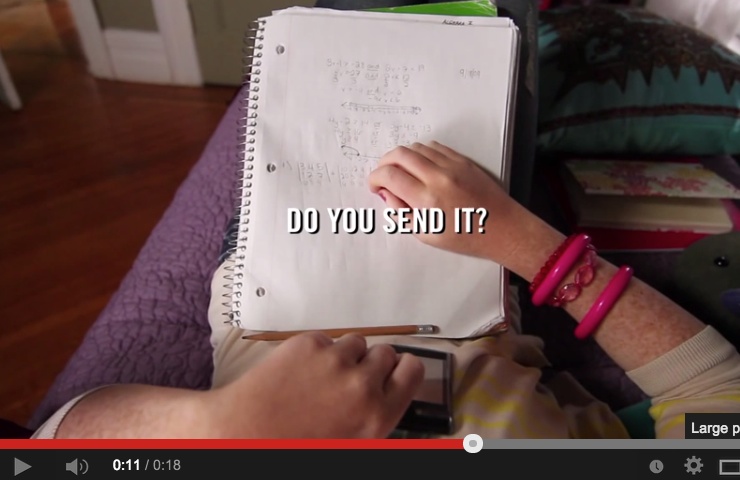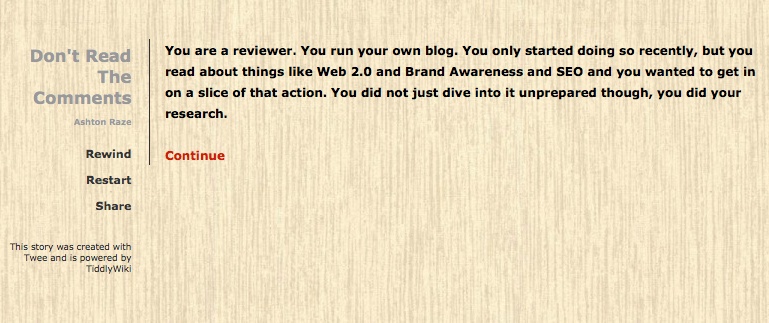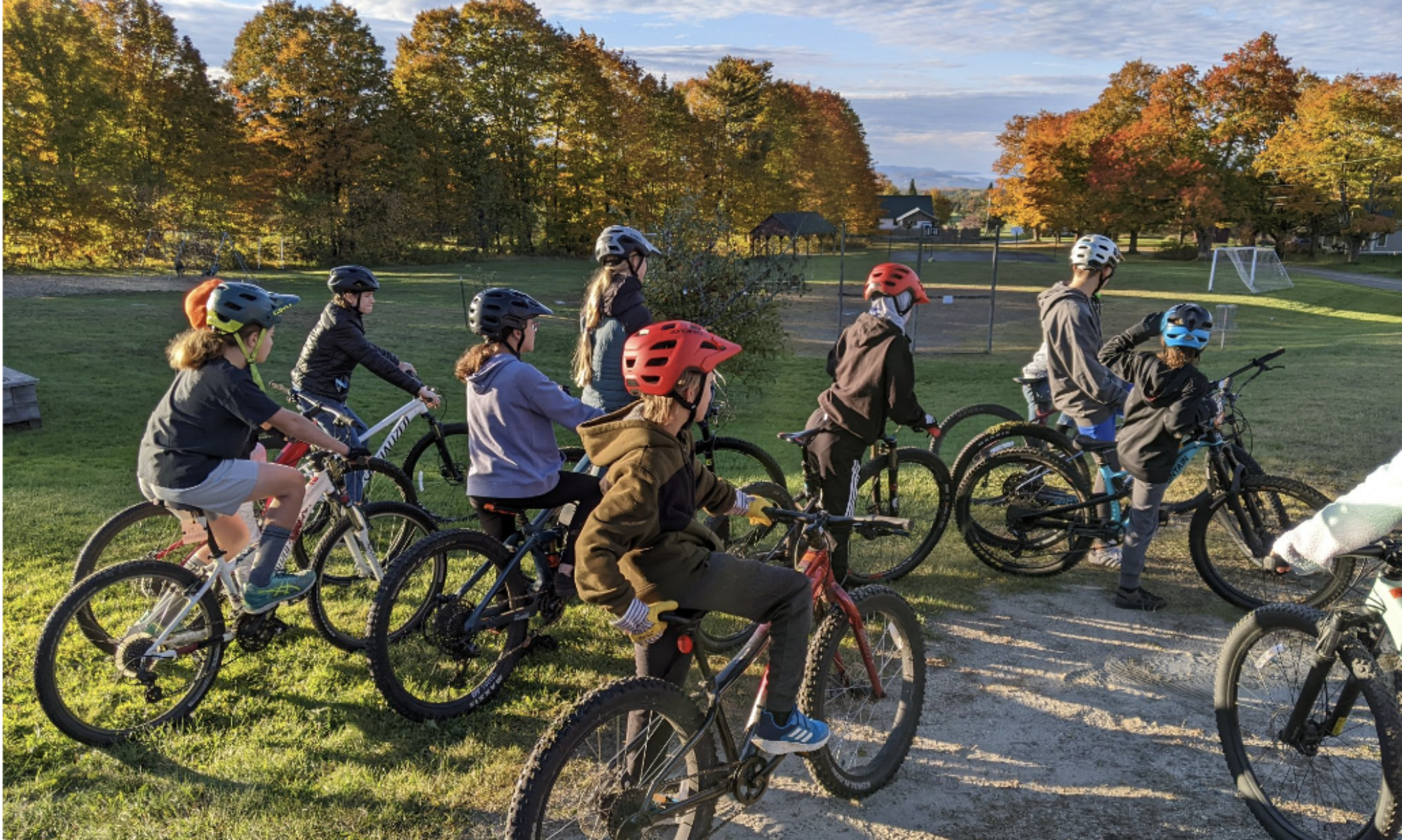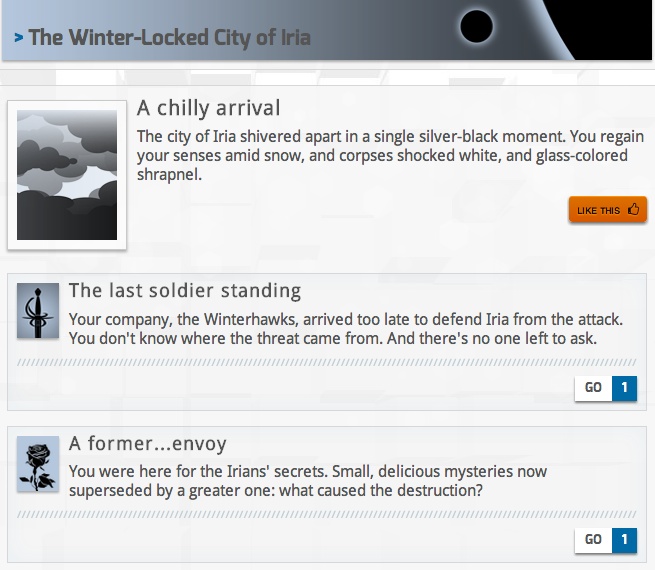Want to try out writing interactive fiction and games with your students? Here are three tools that make it easy to get started.
In order of ease of use: YouTube

YouTube’s recently beefed up their suite of online editing tools (including a bank of royalty-free audio clips) and made them simpler to use. By embedding text-based links in video, you can tell an interactive video-based story.
YouTube Pros:
- editing tools easy to use
- doesn’t require a ton of writing, so caters to visual storytellers
YouTube Cons:
- doesn’t require a ton of writing
- YouTube may be blocked at your school (but that’s a WHOLE other blogpost)
Next up: StoryNexus
StoryNexus made a big splash when it was introduced via the way-too-addictive speculative steampunk game Fallen London. Players navigate through a virtual, text-based world in a Choose-Your-Own-Adventure manner, but with choose-a-card activities that interject an element of chance into the proceedings.
StoryNexus Pros:
- Easy and compelling to get really into world-building
- Lots of students already on there with games; peers, feedback, ideas
- Library of GoogleDocs manuals and crowd-sourced how-to’s
- Easy to add images and audio to text
- Lots and lots of writing to do, boosts world-building
StoryNexus Cons:
- Students need to sign up for accounts
- Hard to build a game in one class period
- Lots and lots of writing to do
And then there’s Twine
(“Do it for the Twine! I ain’t gonna do–“)
Ahem.

Twine‘s a challenging little piece of software that takes a step closer to computer programming logic while you build your games. It’s a stellar introduction to the concept of global vs. local variables, for instance*.
Twine games are browser-based, which means you can practice your HTML and CSS skills while you sort out what kind of tea the yeti usually drinks. Yes, I made that game**. It was not entirely easy but the things that were complicated didn’t make me tear my hair out. They were fun to figure out, and as a fan of interactive fiction, I enjoy the pace of the finished product.
Twine Pros:
- The ability to embed videos, images and audio make this a truly multimedia storytelling platform
- Lets students bone up on HTML and CSS while they write
Twine Cons:
- Steeper learning curve than the other two
Here are some lovely related links for you to disappear down the rabbithole of your choice:
Do you:
- Want to set your student filmmakers loose with YouTube?
- Have questions about this whole open-source StoryNexus thing?
- Prefer some scaffolding to get Twine support in your classroom?
- Need more information about interactive fiction in general?
Let the games… begin!
*If that sentence didn’t make sense to you, get in touch. Let’s get you a seat at this summer’s Code Camp.
**And yes, it’s not finished, because I also have to write many fine blog posts each week, such as this one. You will cope.



Want to try out interactive fiction and games with your students? 3 tools to get you started: http://t.co/Dk3EB6gyWo #vted
Want to try out interactive fiction and games? http://t.co/Hicz9WjCGF
Thanks for offering Twine as another resource to get kids using HTML. Some of my middle school students started using HTML this year and built their own sites rather than using google sites. It was a great experience for them!
That’s fantastic! I really enjoyed working with Twine because it let me really work on my CSS skills as well as thinking differently about variable control. If you do have students who want to build games and like learning HTML, this tool would be right up their alley. Let us know if you wind up using it with them!